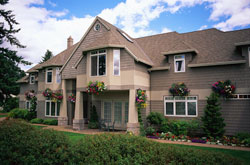Energy Drinks and Energy Home Improvements: Jolt or Crash?
See if We Have Top-Rated
Green Professionals in Your Area

Nowadays, everything seems to be about energy. Amongst all the doom and gloom of economic analysis and forecasts, some of the only sectors that remain optimistic have to do with energy. Energy drink sales shot up 39.6 percent in 2006 and another 29.7 percent in 2007, according to Convenience Store News. Even more significantly, despite the perception that energy drinks are reaching their own bubble, the same study has projected a 19.9 percent increase in 2008.
In recent years, HomeAdvisor, an online resource connecting homeowners with local contractors, has established energy-efficient home improvement tendencies by combining common projects such as new appliances, insulation, replacement windows, and solar panel installation. According to this statistic, "energy" home improvement saw a 76.4 percent jump in 2006, another 79.8 percent jump in 2007, and a projected jump of 107.2 percent this year. According to one U.N. study, the green economy at-large, dominated by energy-efficient technologies, is expected to double by 2020.
Here is a list of four of the biggest and best-selling names in both energy drinks and home improvements. Let's call it a synergy of energy.
Red Bull: Insulation
The original energy drink is also the original energy-efficient material. After all, clothes and blankets are essentially nothing more than insulation for the body; insulated walls have been around long before double-paned windows. Interestingly, one of the oldest forms of insulation common in the 1800s, straw bales, are actually making a comeback. Dependability is another great feature of these energy phenomena. If you're driving around in unfamiliar territory, you can trust that any gas station will at least have Red Bull available. If you're looking for a relatively inexpensive way to increase your home's energy efficiency, installing or upgrading insulation is a can't-miss project.
Monster: Heating and Cooling
Rock Star: Replacement Windows
5-Hour Energy: Energy-Efficient Appliances
The Monster has become nearly iconic in the younger generation. With a name synonymous with size, the Monster points directly toward home heating and cooling, responsible for as much as half the total energy consumption of a home. Here lies the greatest upfront expense and the greatest potential for long-term savings. Generally speaking, energy is associated with raw passion, but in this arena, you should take some time to plan ahead. From the original Monster, Monster Assault, Monster M-80, Monster Khaos, and Monster Hitman to furnaces, boilers, solar panels, geothermal systems, heat pumps, air conditioners, and swamp coolers, the energy choices can quickly become overwhelming.
The first energy drink to go "big" (16 oz.), the marketing behind the brand Rock Star is fairly self-explanatory. With solid reviews in all three energy drink categories—energy boost, taste, and cost—it's no surprise this Rock Star has shot up the alternative beverage charts. Likewise, it's not too much of a stretch to say the hype surrounding replacement windows confers Rock Star status. That said, while replacement windows are unlikely to go out of fashion anytime soon, the long-term outlook is less certain. Already, there is speculation that the energy drink bubble is about to burst. With replacement windows, upgrading from old, single-pane windows is a no-brainer, but it remains to be seen whether homeowners with energy-efficient windows will take the same diligence inspecting and replacing these window installations in the upcoming years.
The marketing surrounding these new two ounce energy drinks focuses on avoiding the crash associated with energy-boosting beverages, but anybody who drinks this drink knows it ain't your grandma's morning cup of coffee. So, too, energy-efficient appliances tend to pack more energy-saving power than most people think. According to home improvement author David Johnston, energy-efficient appliances can reduce your home's appliance-related energy consumption by 30 percent. In some homes, this can mean saving of up to $1,000 a year on your utility bills. Even if they're not top-tier in terms of energy efficiency, most modern appliances will outperform those from 20 or even 10 years ago.
More Tips & Advice For Your Home
- Related Articles
-
- Recent Articles

